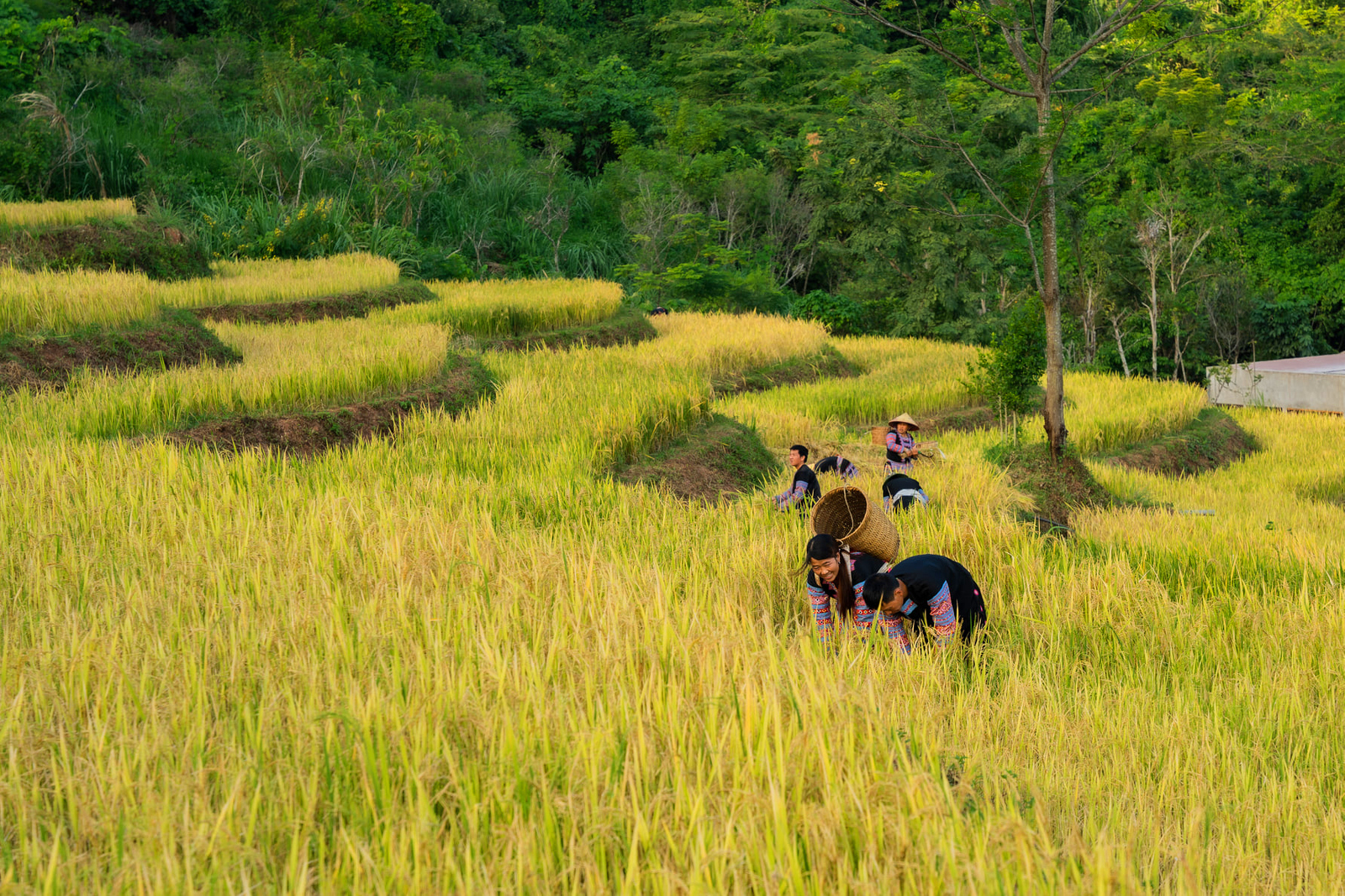Hòa Bình
Sightseeing
Overview
HOA BINH PROVINCE
Square: 4,684.2 km2
Population: 793,5 thousands people (2010)
City: Hoa Binh City
Districts: Da Bac, Mai Chau, Ky Son, Cao Phong, Luong Son, Kim Boi, Tan Lac, Lac Son, Lac Thuy, Yen Thuy.
OVERVIEW
Hoa Binh province is known to be an origin of “Hoa Binh culture” - the cradle of Vietnamese ancient culture. Besides, tourist and humanity resources are diversified, plentiful and attractive with 184 historic sites, cultural sites and natural landscapes together with unparalleled cultures of ethnic groups like Muong, Thai, Mong, Tay and Dao expressed in building architectures, beliefs, customs and traditional festivals.

HISTORY
Hoa Binh province was created on June 22, 1886 following the decree of Tonkin with the name Mường Province, splitting Muong majority areas from Hung Hoa province, Son Tay province, Hanoi and Ninh Binh province. Its name derives from the Sino-Vietnamese 和平, meaning "peace."
The province was administered from Chợ Bờ (in Đà Bắc) hence it was also known as Chợ Bờ Province, until it November of the same year, it was relocated to Phương Lâm district (today in Bất Bạt district, Ha Tay province). In April 1888 it was renamed to "Phuong Lam province", by the French colonial authorities.
On March 18, 1891 the Governor-General of French Indochina decreed that the name of the province would change to Hòa Bình Province with six districts: Luong Son, Ky Son, Lac Son, Lac Thuy, Mai Chau and Da Bac.
GEOGRAPHY
Hoa Binh is a mountainous province in the North. It is bordered by Phu Tho and Ha Tay in the north, Ninh Binh and Thanh Hoa in the south, Ha Nam in the east, and Son La in the west.
The topography is combined by mountains and narrow valleys
CLIMATE
The annual average temperature varies between 23 and 25ºC.
TOURISM
The culture of Hoa Binh combines several ethnic groups with their own languages, traditional literature, and festivals.
Tourists especially enjoy the ethnic specialty dishes including rice cooked in bamboo and grilled meat. At night, visitors can stay in stilt houses at Lac Village in Mai Chau Valley, enjoy watching traditional dancing, music performances (bronze drums, gongs), and Thai minority singing and dancing. The remote Muong, Dao, Tay minority villages draw visitors who like study the life of ethnic groups. Beautiful brocade and forest products are interesting souvenirs.
Mountainous terrain with Thac Bo, Hoa Tien grottoes, Ret Cave, Pu Nooc Primitive forest and many clean springs are suitable for swimming, climbing, walking, and hunting. Visitors are also fascinated by superb beauty of Hoa Binh Hydroelectric Power Plant, the largest one in Vietnam. Boating on Da River is an enjoyable feeling.
Apart of these, scientific tests have shown that the mineral water at Kim Boi Hot Spring is good for drinking, bathing and treatment.
TRANSPORT
Road and water transportation are convenient. There is National Highway No. 6 from Hanoi vie Ha Tay to Hoa Binh, Son La, National Highway No. 15 from Mai Chau to Thanh Hoa, National Highway No. 12B from Hoa Binh to Nho Quan (Ninh Binh).
Hoa Binh Town is 82km from Hanoi. Da River is 5km from Hoa Binh City.

